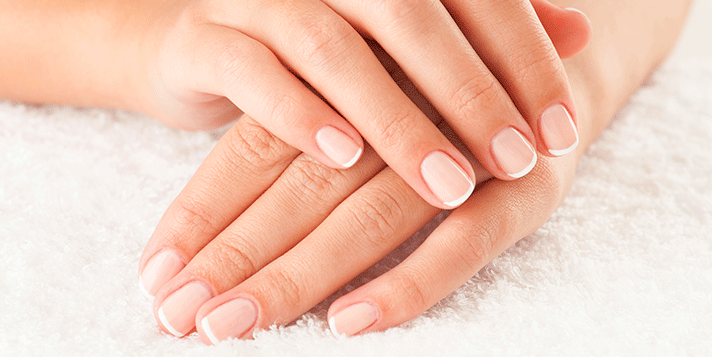Nail Problems
Nail Problems affect people of all ages. Common causes of nail problems include trauma, fungal or bacterial infection, weathering, chemical damage and skin diseases such as eczema and psoriasis. Nail changes may sometimes reflect internal medical problems, such as kidney or thyroid disease, anaemia or low albumin. Diet is generally not responsible for abnormal nail changes, unless the person is suffering from severe malnutrition. A rare but serious cause of nail changes is melanoma, an aggressive form of skin cancer that may present as a black band in the nail.

Some of the more common nail changes include:
- Discolouration (yellow, brown, black, greenish-black)
- Thickening
- Textural changes such as ridges, grooves and pits
- Splitting / brittle nails
- Lifted nail plate ('hollowed nail')
- Painful ingrown toenail
- Skin diseases of nail fold or nail bed affecting nail growth, e.g. rash, swelling, nodule, warts
- Haematoma (blood/bruise) under nail
To determine the right treatment for your specific condition, please contact Dr Wong Su-Ni at 6733 3629 or leave us a message here.
Investigation
Any persistent abnormal changes to your nails should be medically investigated. See your doctor for treatment or possible referral to a dermatologist. If the cause of your nail problem is not immediately apparent, nail clippings and scrapings from beneath the nail may be taken for laboratory analysis for fungal infection. Sometimes, a nail matrix or nail bed biopsy may be necessary. Blood tests may occasionally be required to assess for internal disorders.
Treatment for Nail Problems
Fingernail infections usually respond faster to treatment than toenail infections. Depending on the cause, treatment options may include:
- Antibiotics for bacterial infections
- Topical &/or oral anti-fungal preparations, for fungal infection of the nails
- Removal of part of or the whole nail together with targeted treatment of the underlying cause. Partial nail avulsion with segmental matrix horn cauterization is an effective but minimally- invasive treatment for painful ingrown toenails, with faster recovery time than traditional surgical methods. Destroying the nail-producing matrix at the targeted site prevents re-formation of the part of the nail that keeps becoming ingrown, while preserving the rest of the nail. This is done under nerve block anaesthesia which makes the procedure painless.
- Treatment for any contributing skin disease e.g. steroid lotion or injections, oral medication or biologic injections for nail psoriasis
- Laser excision of warts around or under the nails
- Advice on appropriate nail care
References:
- D de Berker, I Bristow, R Baran, R Dawber. Nails – Appearance and Therapy. Martin Dunitz, 2002.
- Eckart Haneke. Controversies in the Treatment of Ingrown Nails. Dermatol Res & Practice, Volume 2012, Article ID 783924
- Vaccari S, Dika E, Balestri R, Rech G, Piraccini BM, Fanti PA. Partial excision of matrix and phenolic ablation for the treatment of ingrowing toenail: a 36-month follow-up of 197 treated patients. Dermatol Surg. 2010 Aug;36(8):1288-93.


